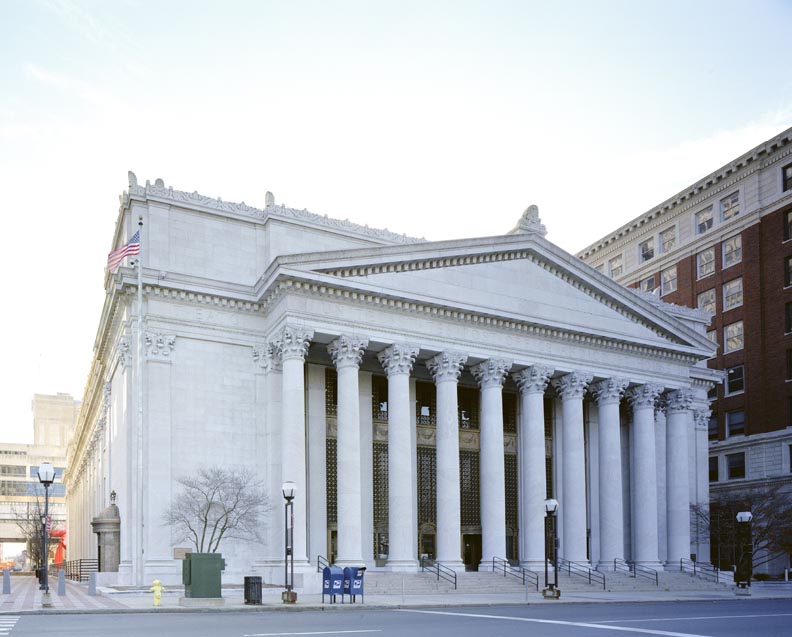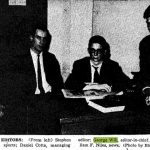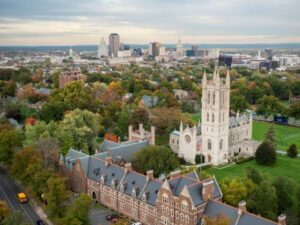Brendan W. Clark ’21
Editor-in-Chief
In the District of Connecticut, the “reentry court” helps to provide drug offenders with an opportunity for a successful reentry into society. The court, officially the Achievement/Commitment/Trust (ACT) Reentry Court, was brought to the District of Connecticut by U.S. District Judge Jeffrey A. Meyer in 2016 and has helped many with their efforts to assimilate to life outside of prison.
Meyer modeled the court on others—including some programs pioneered in Philadelphia. Participants in the court, which number around 9-10, meet every two weeks with a focus of maintaining employment and succeeding with their reentry to society through honest dialogue and receive regular encouragement from Judge Meyer and others in the justice system.
So far, Meyer added, the voluntary program has had only men, but women “would be welcomed.”
“The prison experience is a traumatic one,” Meyer observed, noting that the experience is one where your self-esteem is decimated. “Rarely is there a person who can start anew without assistance,” Meyer added. Thus, the reentry court seeks to bridge that gap and provide that necessary moral and human support to those who are released. The court focuses especially on those at risk for recidivism and each session for participants lasts for a year.
So often, Meyer told the Tripod, the Courtroom is “one of great formality and set in an adversarial form”: a judge is seated higher than the defendant, a defendant may be shackled, and the course of the discussion focuses on punishment. In reentry court, all parties—judge, prosecutors, probation officers, and former prisoners—sit at the same level around the attorney tables for a candid discussion about progress and success.
The focus in the setting is not on retributive justice. Rather, the focus is on rehabilitation and the participants’ worth as human beings. Meyer, along with the participants, discuss their attempts at employment, continued work, and family life. Often, Meyer added, participants “bring their children and wives with them,” which personalizes the process. That personalization, too, reminds Meyer of the shared humanity which can often be overlooked in the justice system.

While Meyer cautioned that not every story is a success, he spoke to many who have achieved a great deal as a result of the program. On education, Meyer noted that participants frequently seek out vocational opportunities and, in another instance, enrolled in general education programs at local institutions, such as Gateway Community College in New Haven. And, importantly, they still keep up on progress.
What is so critical, he added, was that participants “receive the affirmation of being told that they are doing well—that they are succeeding—and that they are not alone.” So often, Meyer observed, that sort of support and encouragement is absent from a prison environment. Affirmation, Meyer added, isn’t just a buzz word. It is “what I hear from them…what participants in the program cite as critical to their reentry and to improving their self-worth,” he added.
Meyer touched on the importance of the court and the profound impact it can have on all constituents in the federal judiciary. That affirmation, Meyer continued, reverberates among both groups of participants. For prosecutors, probation officers, and institutional actors, recognizing that each participant is a person becomes clearer as a result of participating in the program. “It helps us improve at our jobs,” Meyer added, stressing that the program reminds those in the criminal justice system of the true aim: rehabilitation.
Recognizing justice and the participants as individuals, as people, is something that Meyer has strives to embrace in his judicial career, which has included clerkships for James L. Oakes of the 2nd Circuit Court of Appeals and Supreme Court Justice Harry Blackmun, who were both “men of great heart” who recognized “justice at the individual level.”
Reentry court, for Meyer, “makes me a far better judge” when he can understand some of what these men have struggled with. “In the abstract, we can say we understand,” Meyer noted, but hearing the stories and being a part of their return process makes all the difference.
For now, with the pandemic, reentry court has shifted to Zoom and, Meyer added, he is “not happy about it” and looking forward to the day when in-person interaction can return. The court regularly hosts a graduation for participants where, again, the relationships are central: it isn’t a space where “high legal doctrine dominates,” Meyer added, but “about humanizing the justice system.”
This interview—the second in a series of articles in the Tripod’s “Lawyer’s Corner” by Editor-in-Chief Brendan Clark ’21—examines the legal field by engaging seasoned professionals who have had a significant impact in their respective practice areas.






+ There are no comments
Add yours